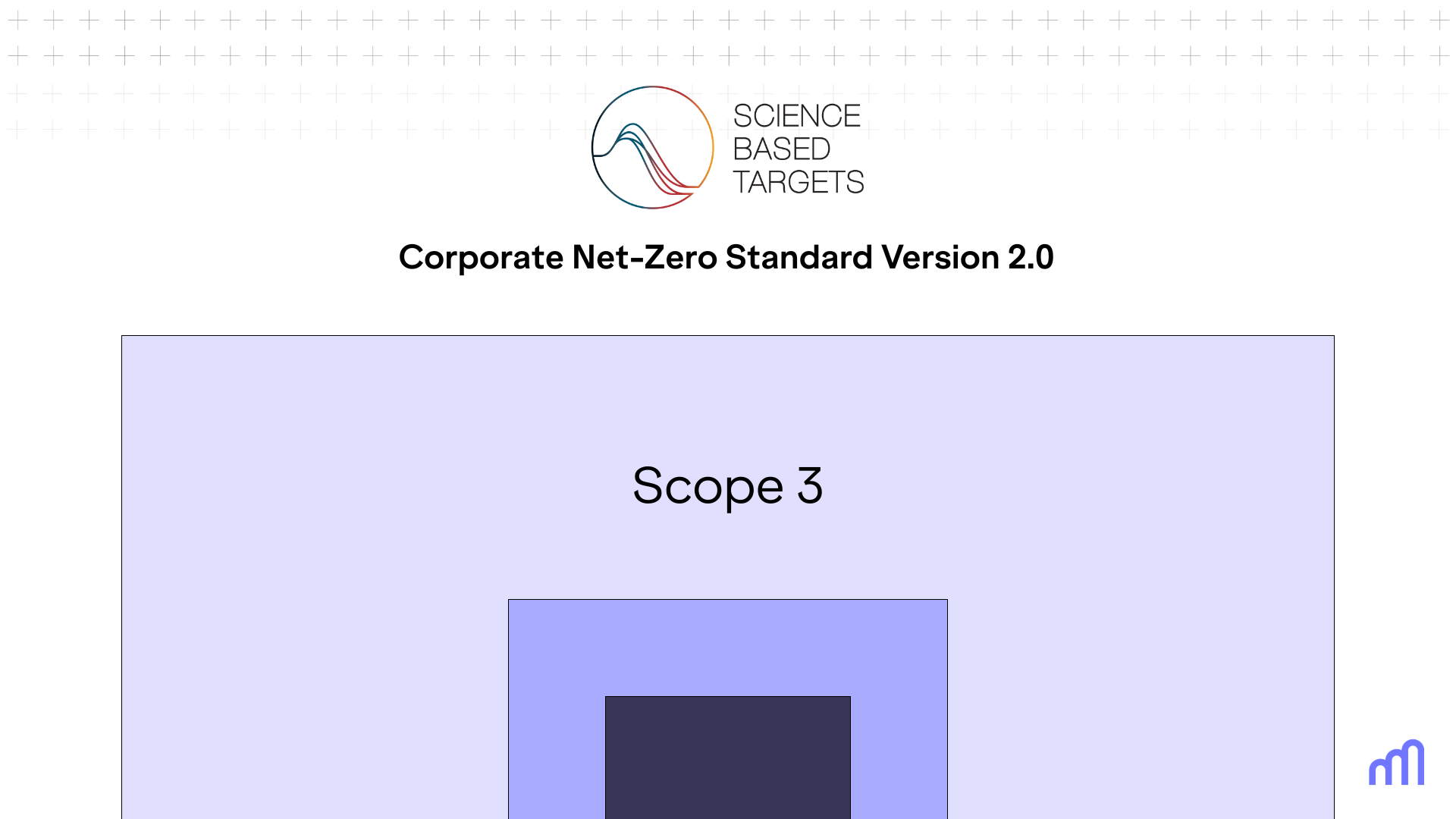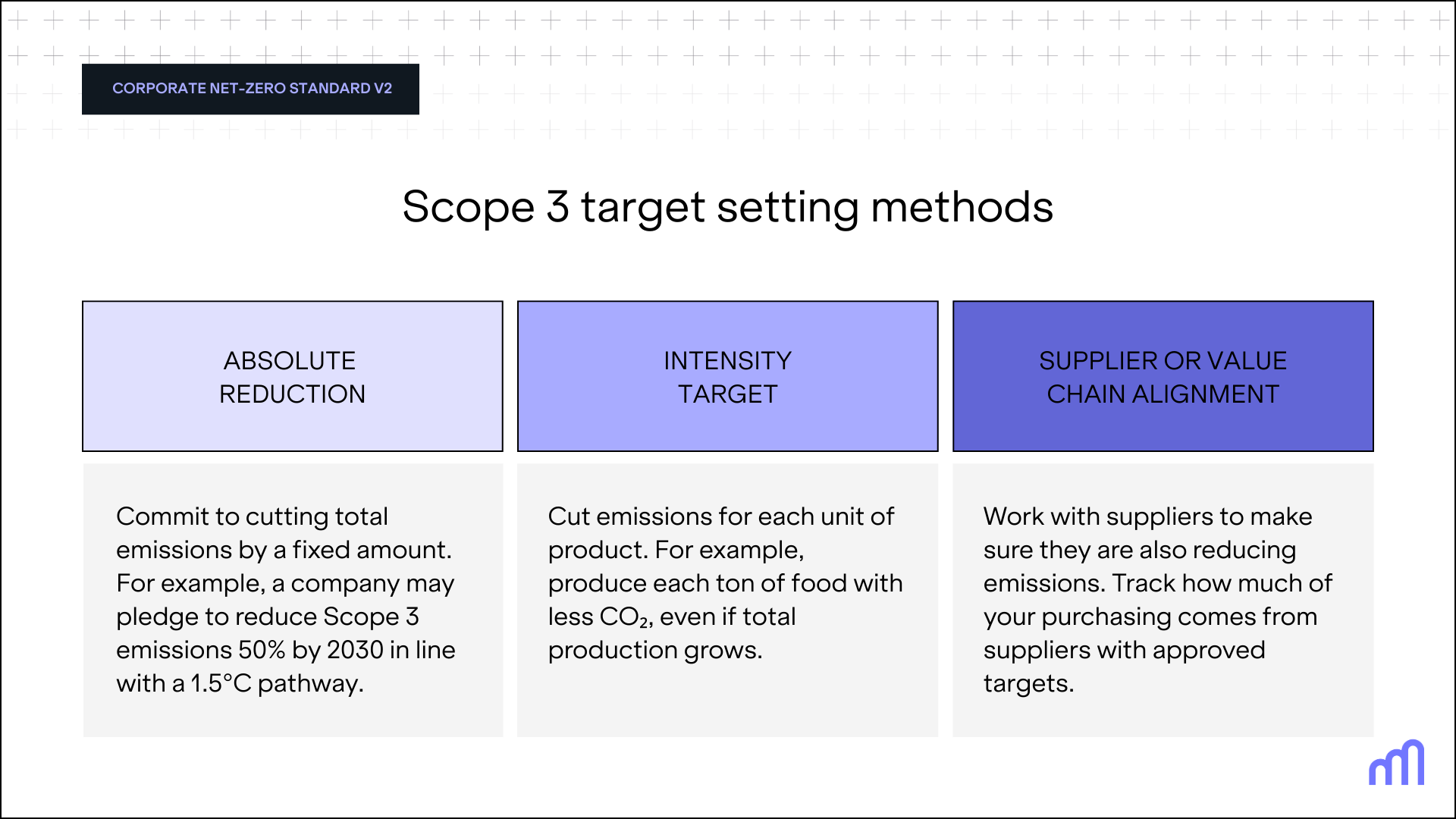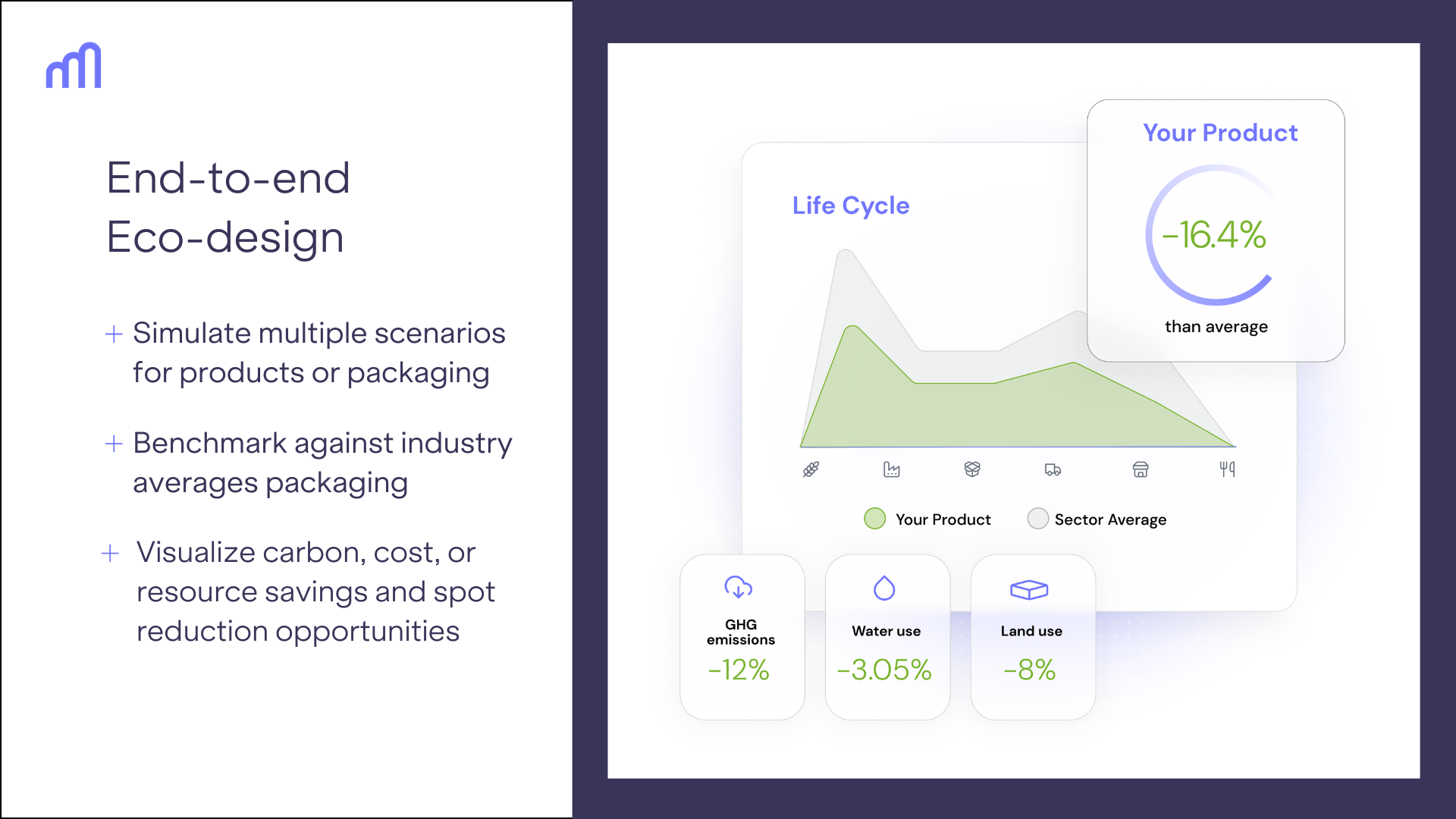

The Science Based Targets initiative (SBTi) has raised the bar for corporate climate action with its Net-Zero Standard Version 2.0, introducing stricter Scope 3 requirements that will reshape how food companies manage emissions across their supply chains.
For an industry where supply chain emissions far outweigh direct operations, these updates bring major implications. In SBTi’s own surveys, over half of companies cited Scope 3 as the main barrier to setting credible targets, a challenge this new framework aims to address.
Currently in pilot testing and set to take effect in 2027, the revised standard outlines a clearer path for food businesses to act on their largest source of emissions.
This article breaks down the key Scope 3 changes under Net-Zero V2 and what food companies should do to prepare.
The current Net-Zero Standard requires companies to cover at least 67% of their Scope 3 emissions in near-term targets and 90% in long-term ones. This percentage-based boundary treated all Scope 3 categories the same, which sometimes allowed companies to exclude major emission sources while technically meeting the coverage threshold.
V2 of the Standard replaces these percentages with a focus on “significant” emission sources. Instead of covering a fixed share of emissions, companies must now:
For food companies, this means focusing on categories like Purchased goods and services (Category 1), Processing of sold products (Category 10), and Franchises (Category 14), which often represent the largest portions of the value chain footprint.
According to SBTi estimates, this approach typically captures over 90% of total Scope 3 emissions, ensuring that reduction and reporting efforts target areas with the greatest climate impact.
Further reading: Scope 3 Emissions: A Complete Guide to the 15 Categories
Scope 3 target setting is mandatory for large and medium companies in higher-income countries (Category A), regardless of their share of a company’s total emissions, but remains optional for small and medium companies in lower-income countries (Category B).
Companies with FLAG emissions (Forest, Land, and Agriculture) that are more than 20% of their total emissions across Scope 1,2,3, are required to set dedicated targets, managed separately from other energy or industry-related emissions.
Because land use is central to their operations, food companies are classified as FLAG sector companies by default, meaning they must report FLAG emissions separately and set these dedicated FLAG targets alongside their standard science-based targets. This ensures that all major sources of greenhouse gas emissions are comprehensively covered.
Companies can set Scope 3 targets using different methods:

Relevant Scope 3 emission sources must be reported annually, with full Scope 3 reporting every three years.
Under SBTi Net-Zero V2, supplier alignment is key to Scope 3 credibility, especially for food companies with emissions-intensive supply chains.
Companies must track progress by looking at the percentage of procurement spend covered by suppliers committed to science-based targets. This makes supplier alignment a measurable KPI rather than a broad commitment.
For food companies, meeting these requirements means building structured supplier engagement programs, improving primary data collection, and integrating climate criteria into purchasing decisions and contracts.
Looking to automate supplier engagement and assessment? Learn more about our Supplier Assessment feature.

Net-Zero V2 emphasizes direct, traceable reductions.
For food companies, this means focusing on tangible emissions reductions such as cutting methane emissions from dairy farms, reducing fertilizer use on crops, or improving land management practices. These efforts are measurable, verifiable, and directly linked to specific sources in the supply chain.
Where direct traceability isn’t immediately possible, indirect mitigation such as book-and-claim systems can be used as a temporary solution, provided the company justifies its choice and reports these efforts separately. These indirect measures should still lead to real, measurable outcomes.
Companies may use energy and commodity certificates, such as renewable energy certificates or carbon credits, to cover Scope 3 emissions only in the short term. However, this usage is strictly conditional: companies must show a clear plan to phase them out.
Certificates are only a short-term fix. By design, SBTi wants companies to move away from them and cut emissions directly.
Looking further ahead, by 2050, SBTi mandates that 100% of a company’s revenue must come from “net-zero-aligned” products. This means all products must be sourced, manufactured, and marketed in ways that align with science-based net-zero pathways.
For food companies, this drives product reformulation, packaging redesign, regenerative sourcing, and innovation in product portfolios. Features like eco-design are invaluable in this process.

Start by mapping out where your emissions come from. Create a visual “heatmap” that highlights any category making up 5% or more of your Scope 3 emissions, or any single activity responsible for 10,000 metric tons of CO2 equivalent or more.
Break down the analysis by ingredient, where products come from, key suppliers, and production methods (like beef, soy, palm oil, packaging, or co-manufacturing). Use this insight to focus your reduction work where it will have the biggest impact.
Automate the way you collect and update your emissions data each year. This should include buying volumes, supplier details, locations, farming practices, transportation types, and regular emission factor updates. Automating these steps saves time and helps you confidently publish accurate climate data year after year.
Track what percentage of your tier-1 purchasing goes to suppliers who have set science-based climate targets (starting with high-impact categories by 2030 and expanding to all by 2050). Build these climate-alignment requirements into your supplier policies and contracts, so lowering emissions becomes a routine part of doing business.
Be specific about when certificates (such as those for renewable energy or lower-carbon raw materials) are permitted. Set clear rules about how recent these certificates must be and where they’re from, for example, using only certificates generated in the last year or from trusted regions and suppliers.
This ensures your use of certificates genuinely reflects real, recent climate efforts. Plan for a timeline to eventually move to fully traceable, primary data supply chains, and make sure your sustainability claims are accurate and verifiable.
Don’t just report total emissions. Also show progress with new metrics, like the share of spending with aligned suppliers and the revenue from climate-friendly products. Use clear, documented rules so your reported progress can be backed up in an audit and trusted by investors or customers.
Document your calculation methods, keep up-to-date records from suppliers, and save detailed files that log any changes in your approach. Being organized from the start means you’ll be prepared for external checks and can confidently demonstrate your progress over time.
Understand how Carbon Maps can help you address your Scope 3 emissions
Whether you’re mapping your emissions, automating data collection, tracing suppliers, or modeling lower-carbon product options, Carbon Maps makes it simple to meet evolving SBTi requirements and make credible progress.
Book a demo